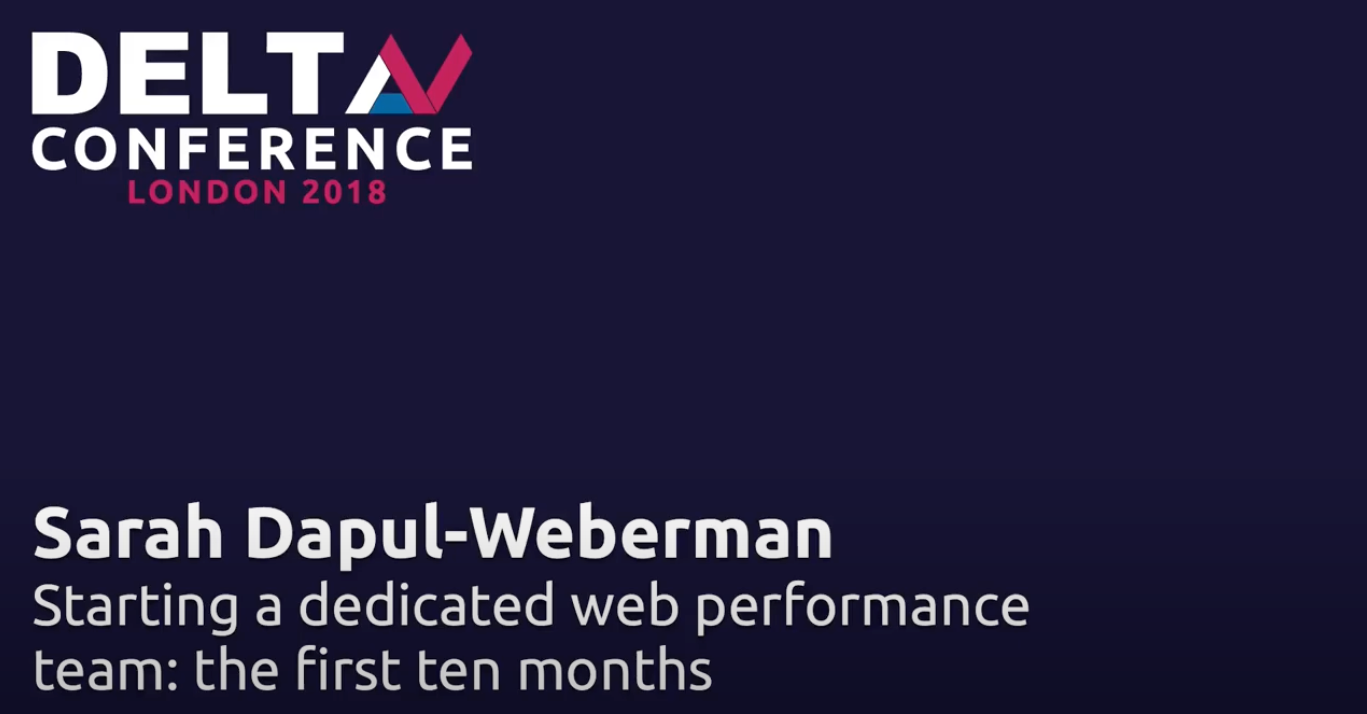Starting a Dedicated Web Performance Team
• 3 min read

My notes on the "Starting a Dedicated Web Performance Team" tech talk by Sarah Dapul-Weberman
First Dedicated Performance Team
- Migration to react
- better performance gains: 20% improvement in performance and 10-20% engagement increase
- 30% improvement in performance in unauth pages
- 15% increase in signups
- 10% increase in SEO traffic
- 5-7% increase in logins
- They started to think about performance, because people were excited about the performance gains
- Engineers didn't know if the performance metrics were accurate. No documentation of improvements. No ownership of performance problems.
- They started with a client-focused performance team because it was the biggest bottleneck
Data Confidence
- They had an internal metric: Pinner Wait Time (PWT)
- image and the meta data are the most important things in the surface that users engage with
- it's a composite metric of how long it takes for each of these to load
- They noticed that there was no correlation between this performance metric and business and engagement metrics. So they changed to a different metric: they changed it to TTI.
- They wanted to show to the rest of the company that, when a metric changed, it would affect engagement, and it was extremly important to get buy-in from other people
- Fighting doubt
- Set Baselines: validate performance metrics, confidence tests implemented, graphs reflect real user experience
- Tie performance metrics to business goals: performance tied to engagement wins and better trust in performance
- Run PR Campaign: teams know about the performance team and come to them for help
- Fight Regressions: regression prevention could actually be more impactful than shipping optimizations. Better trust in performance, people more willing to do optimizations, and more regressions caught
Regressions
- Make regression testing painless: they called it Perf Watch
- Commits that are regressing performance in Pinterest
- They do in a batch of commits
- Run tests for each critical page: run several times to reduce bias
- Calculate the 90th percentile of Pinner Wait Time
- Detecting a regression: they are imediately alerted
- Engineers can fix it
- Or revert the PR
- Commits that are regressing performance in Pinterest
- Perf Detective
- They do in a batch of commits
- Binary search in the batch of commits to find the commit that caused the regression
Optimization Strategy
- Analysis and braimstorming: a lot of projects that they could work on
- Line of sight: only three people so they needed to prioritize
- log each project in a doc
- see the impact
- see the effort
- and choose projects
- Prototyping
- testing to see the possible impact and effort that each project would take
- Expertimenting
- A/B experiments
Vision
- A team that works on optimizations? A team that focuses on tools?
- Five pillars
- Scalability: not the only people working on optimizations. They wanted to any product team be able to work on performance optimizations
- Ownership: want the teams to own their own surfaces, they wanted product teams to find performance as one of the key metrics they want to monitor
- Knowledge: share performance knowledge with the rest of the teams
- Tools: create the tools that developers can use for Pinterest -specific performance and make sure that they understand how to improve performance at Pinterest, and they can do it quickly and without issue
- Strategy: continue to be the strategy performance team for Pinterest. How the tooking works, figure out what critical surgace areas they might need to improve in the future
Hey! You may like this newsletter if you're enjoying this blog. ❤
✖